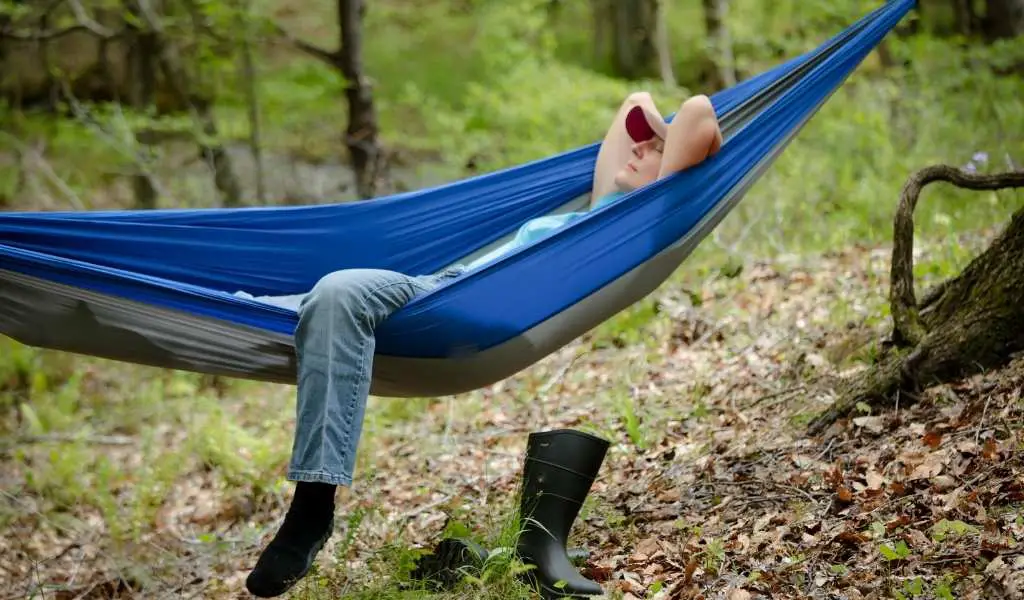Disclaimer: As an affiliate I may earn a commission on any qualifying purchases, including those from Amazon.com, at no extra cost to you – read more.
If you’re buying a new camping hammock, you’ll notice that they sometimes use different measurements for the type of material.
Two of the most popular types of hammock material are 70D nylon and 210T nylon. For example, an ENO camping hammock states that it is 70D nylon, whereas many of the cheaper brands such as Covacure have 210T nylon, but what is the difference between these?
210T and 70D are both referring to the density of the nylon used to make the hammock. T stands for tex whereas D stands for dernier. When converted, 70D nylon is 30 times lighter than 210T nylon per meter of yarn.
However, the density of yarn doesn’t give a full picture, you also need to consider the weave used to get an idea of strength.
In the earlier example of ENO vs Covacure, one uses 70D nylon taffeta whereas the other uses 210T parachute nylon (aka ripstop nylon). This is why the same weight capacity can be achieved with less material. More on this below.
What Are Dernier and Tex?
Both Dernier and Tex are ways of measuring the density of hammock material, here is the definition of each:
Denier (D) is a unit of textile measurement that provides the density of the material. It tells us the weight in grams of 9000 meters of yarn. Dernier is more common in the United States.
Tex is an alternative unit of textile measurement that’s more commonly used in Europe and Canada. It is the weight in grams for 1000 meters of yarn.
Calculating the Difference Between 70D and 210T
Now that we know the difference between dernier and tex, we can work out the comparative weight per meter of yarn:
70D nylon means 9000 meters of nylon will weigh 70 grams (7 grams per 1,000 meters)
210T nylon means 1000 meters of nylon will weigh 210 grams
As you can see, 70D is 30 times lighter than 210T nylon.
Why the Weave is Also Important
The weight of the yarn is not the only important factor when comparing material. You should also consider the weave and relative comfort.
Some of the most popular types of nylon used in hammocks are:
- Nylon Taffeta: This is a tightly woven plain weave that aims to mimic the lightweight but strong properties of silk taffeta. It tends to be more expensive but very soft which is why it’s used in the best camping hammocks such as those by ENO and Kammok.
- Parachute Nylon: This is another name for ripstop nylon. This is a fabric that has a reinforcement yarn interwoven at regular intervals in a crosshatch pattern. You will notice ripstop nylon from the hexagonal patterns it tends to show. The material is cheaper to make so it tends to be favored by budget hammock brands.


